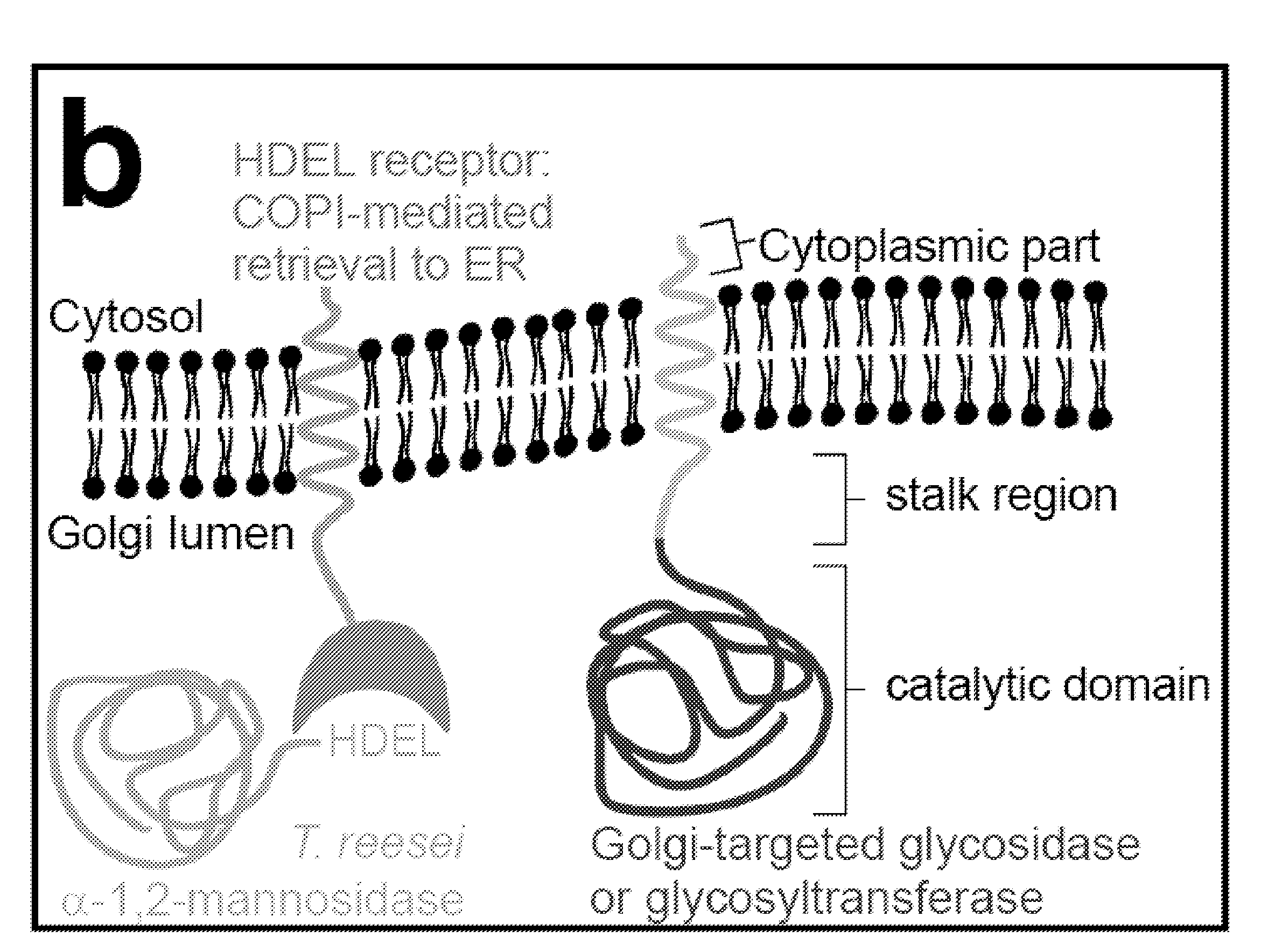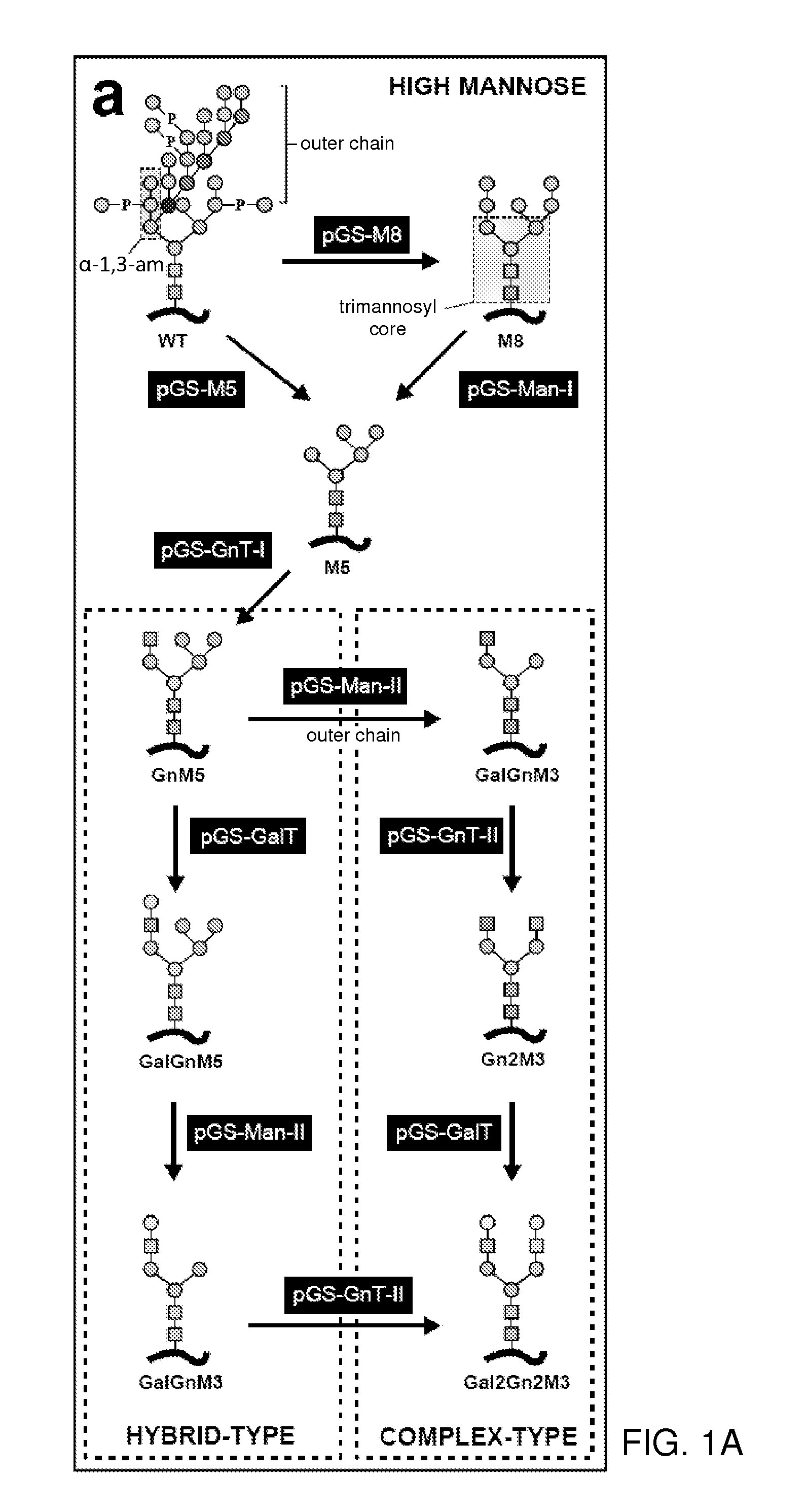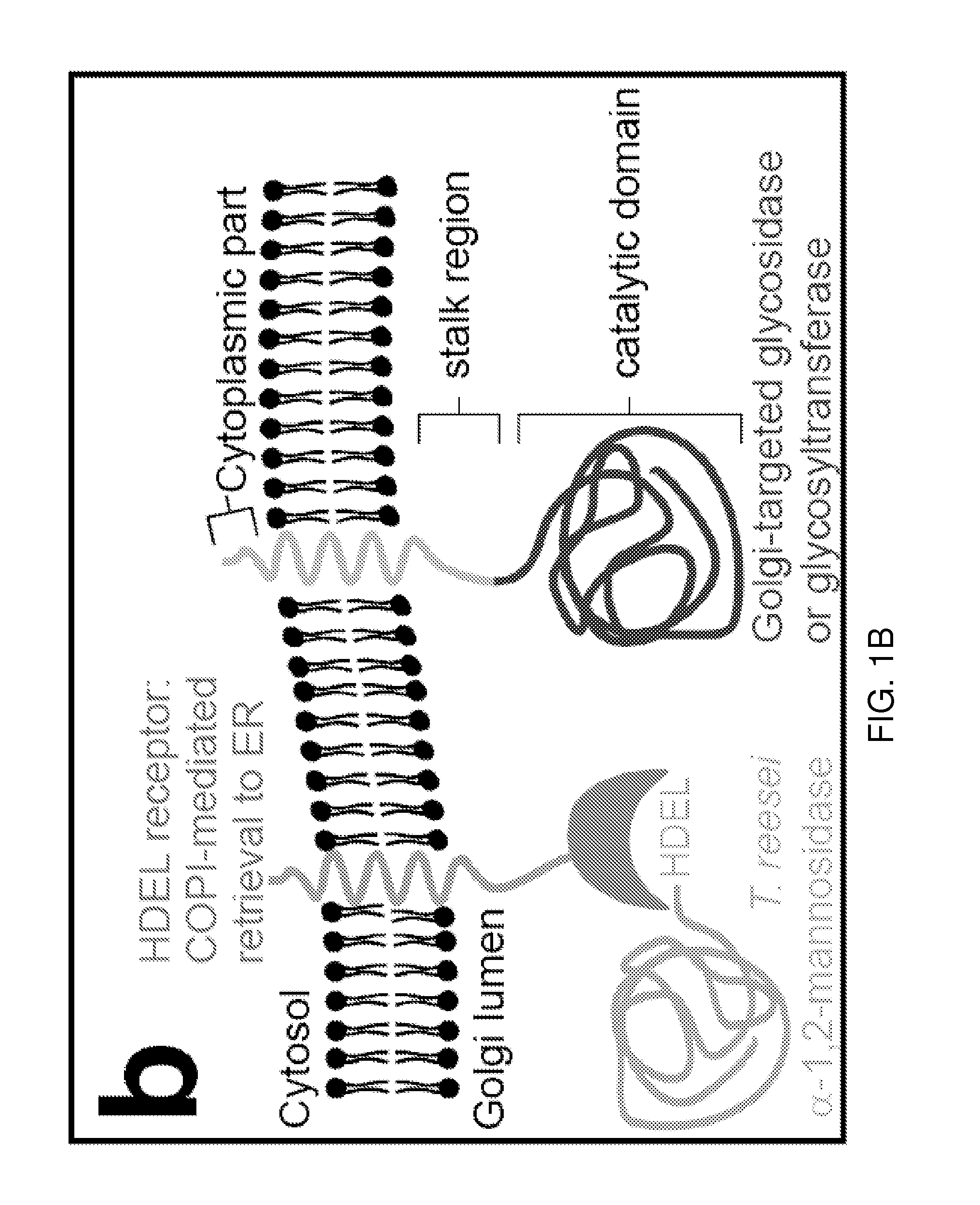Methods for producing substantially homogeneous hybrid or complex n-glycans in methylotrophic yeasts
a technology of methylotrophic yeast and complex n-glycan, which is applied in the field of gene engineering of methylotrophic yeast, can solve the problems of reducing the half-life of in vivo protein, hampering downstream processing, and unfavorable yeasts, and achieves high efficiency and effective engineering
- Summary
- Abstract
- Description
- Claims
- Application Information
AI Technical Summary
Benefits of technology
Problems solved by technology
Method used
Image
Examples
example 1
Reagents
[0091]Reagents used in Example 2 included antibiotics, such as Blasticidin S (Fluka), Zeocin (Invitrogen), Nourseothricin (Werner BioAgents), Geneticin G418 (Invitrogen), and Hygromycin B (Calbiochem); Bacto Agar (Difco), Bacto peptone (Difco), Bacto yeast extract (Difco), Biotin (Sigma), BMGY (see REAGENT SETUP), BMMY (see REAGENT SETUP), Citric acid (Calbiochem), Deionized water (dd-water), DTT (Sigma), Glucose monohydrate (Merck), Glycerol (Biosolve), HEPES (Sigma), Methanol (Biosolve), NaCl (Merck); restriction enzymes, such as AvrII (New England Biolabs), BsiWI (New England Biolabs), BstBI (New England Biolabs), PmeI (New England Biolabs), SapI (New England Biolabs), Sorbitol (Sigma), YNB (yeast nitrogen base) without amino acids (Difco) and YPD media and plates (see REAGENT SETUP).
TABLE 2AntibioticsAntibioticFinal concentration (μg / ml)Blasticidin500Zeocin100Nourseothricin100G418350Hygromycin B150
[0092]Equipment
[0093]Equipments used in Example 2 included 24-well culture...
example 2
DSA-FACE N-Glycan Profiling
[0192]To prepare samples for Fluorophore Assisted Carbohydrate Electrophoresis on capillary DNA-sequencers, N-glycans are released from the glycoproteins by treatment with peptide: N-glycosidase F (PNGase F). Subsequently, the released N-glycans are derivatized with the fluorophore 8-aminopyrene-1,3,6-trisulfonate (APTS) by reductive amination. After removal of excess APTS, the labeled N-glycans are analyzed with an ABI 3130 DNA sequencer. N-glycans of bovine RNase B and a maltodextrose ladder are included as references.
[0193]DSA-FACE Reagents[0194]ABI 310 running buffer or ABI 3130 running buffer (Applied Biosystems)[0195]Ammonium acetate (Merck)[0196]APTS (Molecular Probes)[0197]Citric acid (Calbiochem)[0198]DMSO (Aldrich)[0199]DTT (Sigma)[0200]EDTA, dihydrate (Vel)[0201]Exoglycosidases[0202]Jack Bean α-mannosidase (Sigma)[0203]Trichoderma reesei α-1,2-mannosidase (expressed and purified in our laboratory and available upon request)[0204]β-N-Acetylhexosa...
example 3
Results
[0243]The workflow presented in FIGS. 1a and 1d allows engineering of the N-glycosylation pathway of any wild type P. pastoris strain. The construction of a strain that modifies its glycoproteins with Gal2GlcNAc2Man3GlcNAc2 N-glycans requires the consecutive integration of five GlycoSwitch vectors into the Pichia genome. Each of these plasmids contains a different dominant antibiotic resistance marker for selection. As a consequence, it is critical that the starting strain is still sensitive to all five antibiotics: blasticidin, zeocin, hygromycin, geneticin and nourseothricin. Some other combinations of engineering enzyme—selection marker are available (see Table 4), but not all. One can start from the GS115 wild type strain because its histidine auxotrophy provides an additional selection maker that allows selection for integration of a pPIC9-derived vector that drives the production of a protein of interest.
[0244]This Example describes results of three mouse proteins produ...
PUM
| Property | Measurement | Unit |
|---|---|---|
| volume | aaaaa | aaaaa |
| temperature | aaaaa | aaaaa |
| temperature | aaaaa | aaaaa |
Abstract
Description
Claims
Application Information
 Login to View More
Login to View More - R&D
- Intellectual Property
- Life Sciences
- Materials
- Tech Scout
- Unparalleled Data Quality
- Higher Quality Content
- 60% Fewer Hallucinations
Browse by: Latest US Patents, China's latest patents, Technical Efficacy Thesaurus, Application Domain, Technology Topic, Popular Technical Reports.
© 2025 PatSnap. All rights reserved.Legal|Privacy policy|Modern Slavery Act Transparency Statement|Sitemap|About US| Contact US: help@patsnap.com



